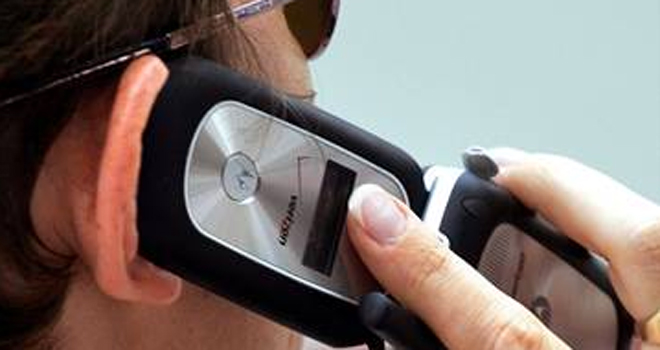Reversing its previous statements on the issue, the World Health Organization said Tuesday that radiation from cell phones can possibly cause cancer.
The WHO put cell phone use in the same risk category as exposure to lead, engine exhaust and chloroform.
The finding, which comes from a team of 31 scientists from 14 countries who are part of the WHO’s International Agency for Research on Cancer (IARC), means that there aren’t enough long-term studies to make any more definitive statements about causation, but there’s enough to show a possible connection and consumers should be alerted, said scientists.
“The evidence, while still accumulating, is strong enough to support a conclusion and the 2B classification,” said Dr. Jonathan Samet of the University of Southern California, who chaired the working group examining the issue. “The conclusion means that there could be some risk, and therefore we need to keep close watch for a link between cell phones and cancer risk.”
The “2B” classification means that cell phone radiation is “possibly” carcinogenic.
“Given the potential consequences for public health of this classification and findings, it is important that additional research be conducted into the long-term, heavy use of mobile phones,” said IARC Director Christopher Wild. “Pending the availability of such information, it is important to take pragmatic measures to reduce exposure such as hands-free devices or texting.”
The group met over the past week at the WHO’s offices in Lyons, France, to examine the impact that exposure to various kinds of electromagnatic fields has on humans, and their subsequent chances of developing cancer.
The group said that they are addressing mounting concerns about the issue. They estimate that there are about five billion cell phone subscriptions globally.
The group of scientists noted that they had reviewed hundreds of articles on the subject, but they could only arrive at a tentative conclusion.
However, they pointed to one particular study that stood out to them, which showed that “past cell phone use” up to the year 2004 showed a 40% increase in risk for fatal brain cancer for the heaviest users of cell phones. That category of people comprise of those who average out at 30 minutes a day over a 10-year period.
But a report in the Associated Press notes that there have been several studies published, including one last year finding no clear link between cell phones and cancer.
The WHO’s survey of the studies about cancer risks from radio frequency electromagnetic fields is scheduled to be published July 1 in The Lancet Oncology, and online in a few days.
The U.S. trade group representing the mobile industry reacted skeptically to the WHO’s Tuesday statement.
“Today, an International Agency for Research on Cancer (IARC) working group in Lyon, France categorized radiofrequency fields from cellphones as ‘possibly’ carcinogenic based on ‘limited evidence.’ IARC conducts numerous reviews and in the past has given the same score to, for example, pickled vegetables and coffee,” said John Walls, a spokesperson for the group, which goes by the name “CTIA–The Wireless Association.”
“This IARC classification does not mean cellphones cause cancer,” he added.
“The IARC working group did not conduct any new research, but rather reviewed published studies. Based on previous assessments of the scientific evidence, the Federal Communications Commission has concluded that ‘[t]here’s no scientific evidence that proves that wireless phone usage can lead to cancer.’ The Food and Drug Administration has also stated that ‘[t]he weight of scientific evidence has not linked cellphones with any health problems.'”









